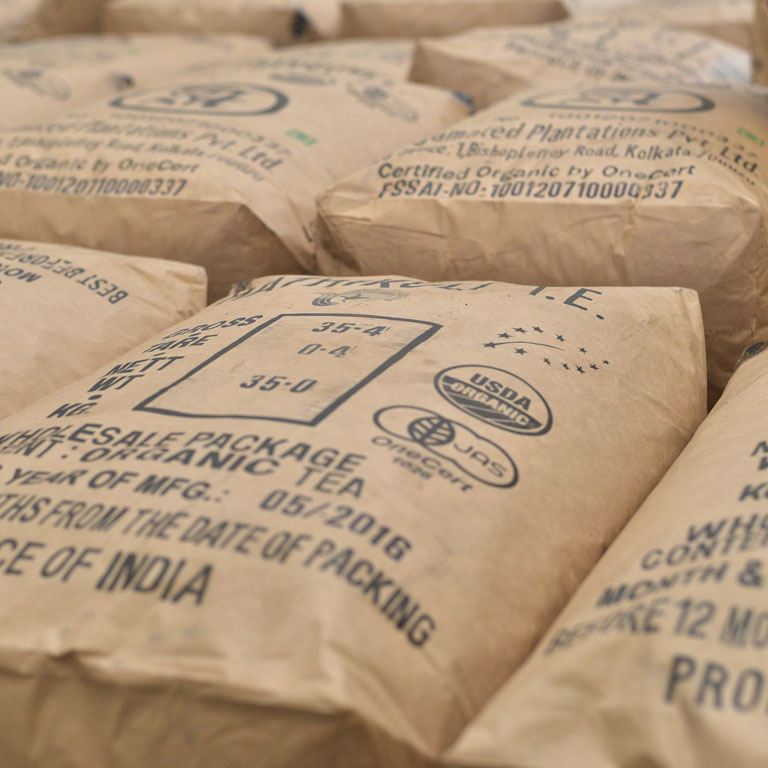WASTE MANAGEMENT POLICY:
Minimizing the environmental impact without compromising on product quality and safety is the primary goal of Tata Global Beverages. By optimizing the packaging and by making efficient use of the resources, we aim to become consumer’s first choice when it comes to the production and consumption of sustainable beverages.
The sustainable packaging which has been introduced by Tata Global Beverages is fit‐for‐purpose, resource-efficient, made from low-impact materials, and is reusable or can be recycled at the end of its life. There are certain challenges that arise while implementing this practice: we have to assess market performance, take the cost into considerations, ensure consumer protection and environmental protection, and maintain a sustainable society. TGB has been able to understand and evaluate all of these and have managed to tackle them effectively. The supply chain (raw materials, packaging manufacturers, and suppliers), consumers, waste service providers, and recyclers are equally responsible for the environmental impact of the packaging. TGB also collaborates with other stakeholders to find more innovative and sustainable packaging solutions and to mitigate and manage the packaging wastes in a holistic manner.
WASTE MANAGEMENT STRATEGY:
The requirements of the market vary day to day in terms of performance, cost, consumer protection, and the environment. These conflicting demands are met by our stellar Waste Management strategy, by assists in the design, manufacture and end‐of‐life management of the packaging. TGB focuses on incorporating the following principles:
1. Fit-For-Purpose: The packaging should be designed to meet both the market and consumer needs. It should also minimize the total impact in a cost-effective way. On top of this, the packaging should comply with the technical performance requirements, reduce the supply chain costs, and fulfill the consumer needs and expectations along with accessibility.
2. Resource Efficiency: By minimizing the use of materials and resources without affecting the product quality and safety, and by maximizing the use of recycled materials, the environmental footprint can be reduced immensely. This process will not damage the packaging or packed products and would not violate any health and safety standards.
3. Low-Impact Materials: By using specific materials that can be recycled and reused for packaging, the impact on the environment can be considerably reduced.
4. Resource Recovery: The resources used for the packaging process should have a potential for recovery and recycling. Informing consumers about appropriate disposal of the package along with avoiding materials that might hinder the recycling process are other factors that should be taken into account.
ZERO WASTE TO LANDFILL PROJECT:
TGBL has always given great importance to ‘zero waste to landfill’ project. We have managed to ensure that our tea packeting units are recycling all the wastes they produce. We classify, segregate, handle, store, and dispose of the solid and hazardous waste, complying with the applicable legislation and existing best practices.
Tetley’s Eaglescliffe factory is the best example for implementing this project and has been zero to landfill since the year of 2013. By working with waste management partners, we have devised an integrated plan for different types of wastes produced in a tea factory.
This project has led to the following benefits:
a. Showcases Tetley's commitment towards sustainability by reducing the environmental impact of our factory.
b. Finding better and innovative ways to reduce, reuse and recycle the resources, leading to the reduction in costs.
c. Ensures a clean environment in factories, which will have a beneficial impact on the occupational health & safety, morale of the employees, inventory management and more.
d. Positive impact on surroundings, neighborhood, and communities.
e. Securing compliance with national and local legislation on the management of solid and hazardous wastes.
f. Establishing systems, processes, and competencies for waste management in TGB.

